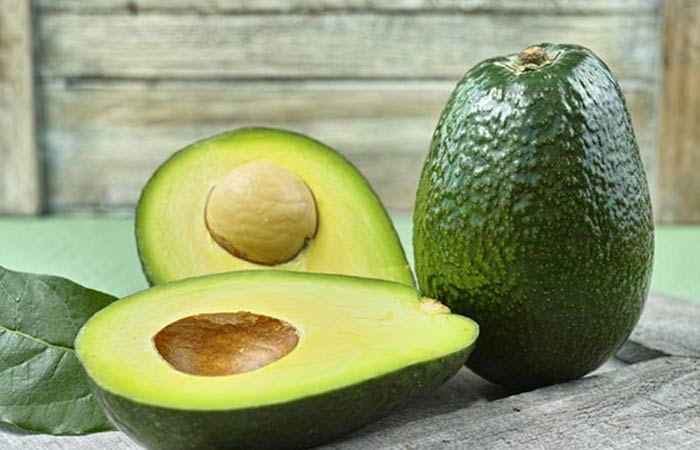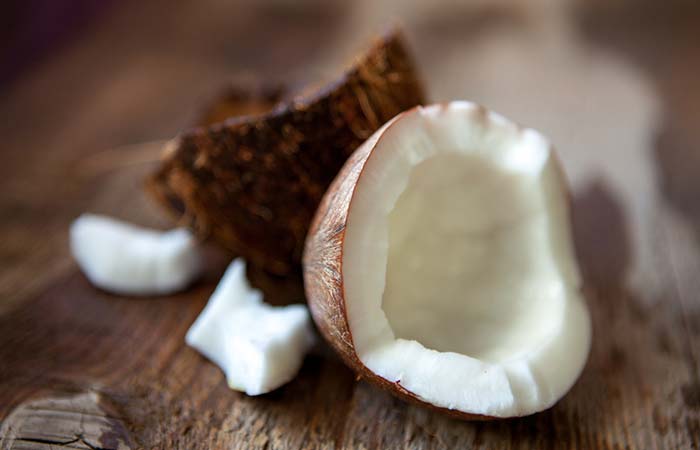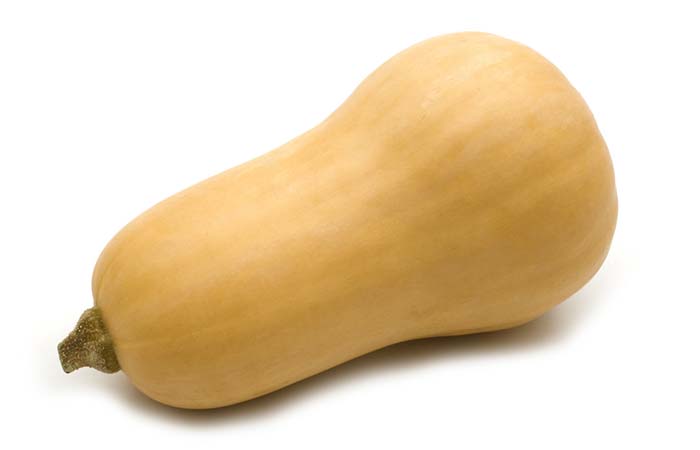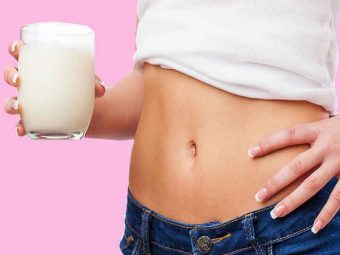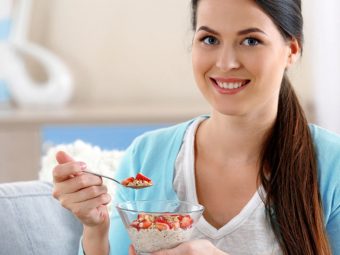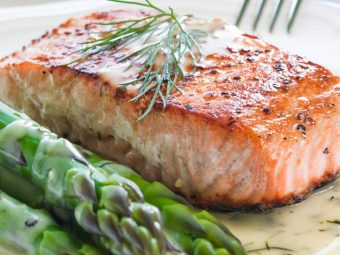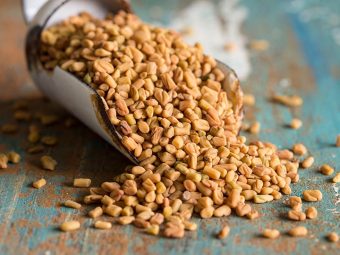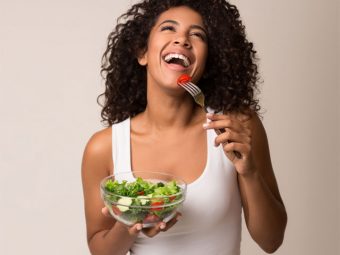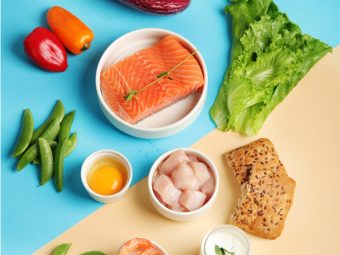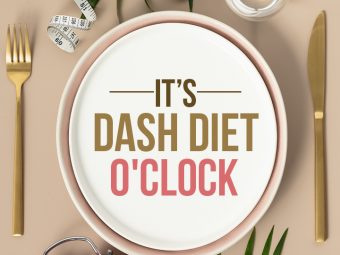32 High Fiber Foods For Weight Loss And Diet Chart To Follow
Foods that can support your weight loss goals and boost digestive health.

Image: Shutterstock
Consuming high-fiber foods for weight loss can work wonders. You can lose the excess flab without having to count calories every step of the way (1). Fiber, a type of carbohydrate, is not easily digested by humans. However, natural fibers in food aid in digestion.
After the Covid-19 pandemic, people have increasingly become aware of the importance of maintaining a healthy diet to control health concerns, such as hypertension, heart disease, and diabetes. Hence, dietary fiber from different sources has become all the more important as part of the diet. This graph shows the market segment of different dietary fiber products in the US.
US Dietary Fibers Market Size Analysis
Source: Dietary Fibers Market Size, Share & Trends Analysis Report By Raw Material (Fruits & Vegetables, Cereals & Grains), By Type (Soluble, Insoluble), By Application (Food & Beverages, Pharmaceuticals), By Region, And Segment Forecasts, 2022 - 2030They boost the metabolism, form a gel-like layer thereby increasing satiety, bulks up the stools, and improves bowel movement through the colon. In this post, you will learn about the 32 best fiber-rich foods to lose weight. You will also get a free diet chart to whittle away the excess flab and keep your health in top shape. Read on to know the high fiber foods for weight loss!
In This Article
32 Best Fiber-Rich Foods For Weight Loss
Piper Steele, a journalist and blogger, shared she added fiber-rich foods like raspberries chia seeds, and almonds to her diet and ate 25 grams of fiber every day. She states in her blog post, “I felt full for longer. That’s the promise of fiber, and I found that it definitely delivers (i).” She also mentions that it decreased her sugar cravings and adds, “I didn’t feel tired or in need of an afternoon pick-me-up like I did before my experimental fiber month.” Here are the fiber-rich foods you can enjoy for weight loss.
10 Fiber-Rich Fruits For Weight Loss
1. Avocado
Total Dietary Fiber: 9.2 g (Medium California Avocado), 17 g (Medium Florida Avocado)
Calories: 160
Insoluble Fiber: 5.8 g (California Avocado), 13.9 g (Florida Avocado)
Soluble Fiber: 3.4 g (California Avocado), 3.06 g (Florida Avocado)
Other Vital Nutrients: Polyunsaturatedi XHealthy fats with more than one carbon bond in their chemical structure that improve brain and nerve functions. fat, Monounsaturatedi XHealthy fats with a single carbon bond in their chemical structure that help lower cholesterol levels in the body. fat, Vitamin E, Vitamin B-6, Vitamin K, Vitamin D, Vitamin A, Magnesium, and Iron.
Green avocados are mostly from Florida and are high soluble fiber foods as compared to the California dark-skinned variety. They are also rich in healthy fats that help reduce inflammation. This is why the avocado should be your go-to fruit. You can have it for breakfast with eggs or in a salad for lunch or dinner.
2. Raspberry
Total Dietary Fiber: 8.4 g per cup
Calories: 65
Insoluble Fiber: 7.5 g
Soluble Fiber: 0.9 g
Other Vital Nutrients: Vitamin K, Vitamin C, Vitamin A, Folate, Potassium, Calcium, Magnesium, and Phosphorus.
The total fiber present in raspberries is 8.40 g per cup. They are also a rich source of vitamins C, A, K, and folate. Raspberries improve bowel movement and prevent bloating. You can have a raspberry smoothie for breakfast or toss a few raspberries in your oatmeal to give it a different flavor.
3. Figs
Total Dietary Fiber: 24.30 g per cup (dried figs), 5.8 g per cup (common figs)
Calories: 279
Insoluble Fiber: 16.30 g
Soluble Fiber: 8 g
Other Vital Nutrients: Vitamin C, Vitamin A, Vitamin K, Calcium, Magnesium, Phosphorus, Potassium, Zinc, and Iron.
This sweet and granular textured fruit is one of the best sources of dietary fiber. It contains 24.30 grams of fiber per cup and is rich in other nutrients such as vitamins A and K, folate, and protein. You can have figs for dessert or add them to your lunch salad.
4. Prune
Total Dietary Fiber: 12.10 g per cup
Calories: 418
Insoluble Fiber: 5.60 g
Soluble Fiber: 6.50 g
Other Vital Nutrients: Vitamin A, Vitamin K, Potassium, Calcium, Phosphorus, Calcium, and Magnesium.
A cup of prunes contains 6.50 grams of soluble fiber and 5.60 grams of insoluble fiber. Prune juice helps treat constipation, and due to its high soluble fiber content, it is also a good weight loss agent. You can have prune juice for breakfast with oatmeal or add prunes to your grilled duck for dinner. Or make your dessert extra special by adding a few dried prunes to your low-fat yogurt.
5. Guava
Total Dietary Fiber: 8.9 g per cup
Calories: 112
Insoluble Fiber: 7.40 g
Soluble Fiber: 1.50 g
Other Vital Nutrients: Vitamin A, Vitamin C, Phosphorus, Calcium, Magnesium, and Potassium.
This sweet tropical fruit is a great source of fiber. A cup of guava contains about 9 grams of fiber and is also loaded with vitamins C and A, magnesium, calcium, potassium, and many phytonutrientsi XNaturally occurring chemicals in plant foods, such as vegetables, fruits, and whole grains, which help boost overall health. . You can have guava as an evening snack or make guava juice for breakfast.
6. Peach
Total Dietary Fiber: 2 g per cup
Calories: 60.1
Insoluble Fiber: 1.20 g
Soluble Fiber: 0.80 g
Other Vital Nutrients: Vitamin A, Vitamin C. Vitamin K, Phosphorus, Potassium, Calcium, and Magnesium.
This aromatic fruit is a wonderful source of soluble and insoluble fibers. Dried peach contains about 13 grams of total dietary fiber. It is also a rich source of vitamins A, C, and K, magnesium, potassium, phosphorus, and calcium. You can add dried peaches to your breakfast oats, smoothies or roasted turkey or chicken.
7. Gooseberries
Total Dietary Fiber: 6.50 g per cup
Calories: 66
Insoluble Fiber: 5.10 g
Soluble Fiber: 1.40 g
Other Vital Nutrients: Vitamin A, Vitamin C, Folate, Magnesium, Phosphorus, Potassium, and Calcium.
Gooseberries are also a good source of fiber. A cup of gooseberry contains 6.50 grams of fiber. They are also rich in vitamin C and phytochemicals that help maintain optimum health. You can have 2-3 sun-dried gooseberries right after lunch to help suppress your hunger pangs. You can also make sweet gooseberry marmalade and add it to your dessert or simply have a spoonful of it to curb your sweet cravings.
8. Sapodilla
Total Dietary Fiber: 13.90 g per cup
Calories: 200
Insoluble Fiber: 9 g
Soluble Fiber: 4.90 g
Other Vital Nutrients: Vitamin A, Vitamin C, Folate, Magnesium, Phosphorus, Potassium, Calcium, and Monounsaturated Fats.
This sweet and granular tropical fruit is rich in soluble and insoluble fiber. One medium sapodilla contains about 5 grams of soluble fiber and 9 grams of insoluble fiber. It is also a great source of calcium, potassium, and folate. You can add sapodilla to your breakfast smoothies or juices or have it for dessert with a cup of low-fat frozen yogurt.
9. Coconut
Total Dietary Fiber: 35.70 g (fresh, medium sized-coconut)
Calories: 1405
Insoluble Fiber: 31.80 g
Soluble Fiber: 3.90 g
Other Vital Nutrients: Monounsaturated Fats, Polyunsaturated Fats, Vitamin C, Folate, Choline, Magnesium, Phosphorus, Potassium, Calcium, and Iron.
Coconut is not a nut; it is a fibrous one-seeded drupe. The liquid endosperm inside the coconut is rich in vitamins and minerals. It is a natural electrolyte and is great for rehydration, weight loss, and better skin. As the coconut ripens, the endosperm transforms into edible flesh, which is rich in vitamin E and dietary fiber. You can add grated coconut flesh to your breakfast bowl, casserole, or salad or just eat the coconut alone. It’s sweet, crunchy, and satisfying.
10. Pear
Total Dietary Fiber: 4 g (one medium-sized pear)
Calories: 103
Insoluble Fiber: 1.80 g
Soluble Fiber: 2.20 g
Other Vital Nutrients: Vitamin A, Vitamin C, Vitamin K, Folate, Choline, Magnesium, Phosphorus, Potassium, and Calcium.
This sweet, granular, fiber-rich, and cholesterol-free fruit is tasty and easily available. You can have it as it is or get a little creative and add it to your dessert, stew, grills, or salad.
10 Fiber-Rich Vegetables For Weight Loss
1. Green Peas
Total Dietary Fiber: 8.80 g per cup
Calories: 134
Insoluble Fiber: 6.20 g
Soluble Fiber: 2.60 g
Other Vital Nutrients: Vitamin A, Vitamin C, Vitamin K, Folate, Magnesium, Phosphorus, Potassium, and Calcium.
A cup of green peas contains about 9 grams of fiber. It is also an excellent source of vitamins A and C, calcium, phosphorus, potassium, and magnesium. You can add green peas to stir-fried veggies, quinoa, or chicken or mushroom stew.
2. Yam
Total Dietary Fiber: 7.60 g per cup
Calories: 158
Insoluble Fiber: 4.80 g
Soluble Fiber: 2.80 g
Other Vital Nutrients: Vitamin A, Vitamin C, Vitamin K, Folate, Magnesium, Phosphorus, Potassium, and Calcium.
Yams are rich in dietary fiber, vitamins, and minerals. You can make grilled yam salad with green peas, chili, and herbs. You can also use air fry yams and have them with chili flakes, a little salt, and low-fat mayonnaise. Add them to curries or casserole and have with brown rice and other veggies.
3. Winter Squash
Total Dietary Fiber: 6.70 g per cup
Calories: 82
Insoluble Fiber: 2.90 g
Soluble Fiber: 3.80 g
Other Vital Nutrients: Vitamin A, Vitamin C, Folate, Calcium, Magnesium, Phosphorus, Potassium, Beta Carotene, Iron, and Omega-3 and Omega-6 Fatty Acids.
Winter squash is rich in good carbs and dietary fiber. It is also a great source of the amino acid tryptophan that helps induce sleep by reducing stress. Make wholesome high-fiber soups or add grilled winter squash to your salad. Or have mashed squash with a good portion of grilled chicken and other veggies.
4. Spinach
Total Dietary Fiber: 5.10 g per cup
Calories: 7
Insoluble Fiber: 3.80 g
Soluble Fiber: 1.30 g
Other Vital Nutrients: Vitamin A, Vitamin C, Vitamin K, Folate, Calcium, Magnesium, Phosphorus, and Potassium.
This leafy green vegetable not only adds flavor and color to your food but also benefits your health. You can have it sautéed with garlic cloves and a little pinch of salt or add it to your soup, salad, stew, wraps, open sandwiches, etc.
5. Okra
Total Dietary Fiber: 5.10 g per cup
Calories: 36
Insoluble Fiber: 3.10 g
Soluble Fiber: 2 g
Other Vital Nutrients: Vitamin A, Vitamin C, Vitamin K, Folate, Magnesium, Phosphorus, Potassium, and Calcium.
Okra is delicious and nutritious if you cook it the right way. Wash the okra and pat it dry before chopping it. Do not overcook. Have it with brown rice, pita bread or flatbread. Or simply add grilled or boiled okra to your rice bowl or salad.
6. Collard Greens
Total Dietary Fiber: 5.30 g per cup
Calories: 11
Insoluble Fiber: 2.10 g
Soluble Fiber: 3.20 g
Other Vital Nutrients: Vitamin A, Vitamin C, Vitamin K, Vitamin E, Folate, Potassium, Copper, and Calcium.
This dark green leafy vegetable is low in calories, has high water content, and is loaded with nutrients. You can add it to chicken broth, vegetable stew, tuna salads or wraps or have it blanched or steamed.
7. Carrot
Total Dietary Fiber: 5.20 g per cup
Calories: 82
Insoluble Fiber: 3 g
Soluble Fiber: 2.20 g
Other Vital Nutrients: Vitamin A, Vitamin C, Vitamin K, Folate, Magnesium, Phosphorus, Potassium, Sodium, and Calcium.
Carrots are good for your eyes as they are rich in vitamin A. They are also rich in dietary fiber, which is why you should consume them at least thrice a week. You can add raw carrots to your salad or vegetable/chicken stew.
8. Endive
Total Dietary Fiber: 5.20 g per cup
Calories: 8
Insoluble Fiber: 3.70 g
Soluble Fiber: 1.50 g
Other Vital Nutrients: Vitamin A, Vitamin K, Folate, Potassium, and Calcium.
Cooked curly endive is also known as chicory and is a great source of vitamins, minerals, and dietary fiber. You can grill and toss it with other veggies and fish/chicken. You may have it as finger food or chop it and add it to omelet or wraps/sandwiches.
9. Turnip Greens
Total Dietary Fiber: 5 g per cup
Calories: 29
Insoluble Fiber: 2.80 g
Soluble Fiber: 2.20 g
Other Vital Nutrients: Vitamin A, Vitamin C, Vitamin K, Folate, Protein, Sodium, Magnesium, Phosphorus, Potassium, Calcium, and Omega-3 Fatty Acids.
Turnip greens belong to the cruciferous plant family and are rich in dietary fiber, vitamins, minerals, and other essential nutrients. They have anti-inflammatory properties that help fight certain types of cancer. Add turnip greens to chicken or pork broth, stew or salad.
10. Beet Greens
Total Dietary Fiber: 4.20 g per cup
Calories: 39
Insoluble Fiber: 2.30 g
Soluble Fiber: 1.90 g
Other Vital Nutrients: Vitamin A, Vitamin C, Vitamin K, Folate, Magnesium, Sodium, Phosphorus, Potassium, Calcium, and Water.
Beet greens are the top leafy part of beetroots and are a great source of nutrients. These fiber-dense vegetables are easy to cook and delicious. You can sauté them with garlic cloves and have with brown rice, other veggies, and a good portion of lean protein. Beet greens also taste great in stews and soups.
8 Fiber-Rich Grains/Nuts/Seeds For Weight Loss
1. Flax Seeds
Total Dietary Fiber: 25.50 g per cup
Calories: 897
Insoluble Fiber: 11.70 g
Soluble Fiber: 13.80 g
Other Vital Nutrients: Vitamin K, Folate, Thiamine, Choline, Polyunsaturated Fatty Acids, Monounsaturated Fatty Acids, Magnesium, Sodium, Phosphorus, Potassium, Calcium, Iron, and Protein.
Flax seeds are rich in dietary fiber and healthy fats. A cup of flax seeds contains about 13 grams of soluble fiber and 12 grams of insoluble fiber. Hence, it bulks up your stools, increases your satiety levels, and makes you eat less. You can grind flax seeds at home to retain the nutrients and add it to your smoothie, oatmeal, salad, or a glass of fat-free milk.
2. Oat Bran
Total Dietary Fiber: 14 g per cup
Calories: 231
Insoluble Fiber: 7.20 g
Soluble Fiber: 6.80 g
Other Vital Nutrients: Vitamin K, Folate, Choline, Betaine, Pantothenic Acid, Polyunsaturated Fatty Acids, Monounsaturated Fatty Acids, Magnesium, Sodium, Phosphorus, Potassium, Zinc, Calcium, Iron, and Protein.
Oat bran is another high-fiber food known for its weight loss properties. It contains 14 grams of fiber, out of which soluble fiber is 6.8 grams. Have two tablespoons of oat bran for breakfast or lunch for favorable results in just a few weeks. You can also add fruits to your oat bran bowl.
3. Sorghum
Total Dietary Fiber: 26.50 g per cup
Calories: 651
Insoluble Fiber: 18.50 g
Soluble Fiber: 8.0 g
Other Vital Nutrients: Niacin, Thiamin, Riboflavin, Polyunsaturated Fatty Acids, Monounsaturated Fatty Acids, Sodium, Phosphorus, Potassium, Calcium, Iron, and Protein.
This humble grain is rich in dietary fiber. One cup of sorghum contains 26.50 grams of fiber. It is for this reason that sorghum is called “the new quinoa.” You can add it to your brunch veggie salad or have a light yet filling sorghum risotto for dinner. Many whole grain foods such as oats, corn, rice are also high in dietary fibre.
4. Amaranth
Total Dietary Fiber: 29.60 g per cup
Calories: 251
Insoluble Fiber: 20.20 g
Soluble Fiber: 9.40 g
Other Vital Nutrients: Niacin, Folate, Vitamin E, Vitamin B6, Magnesium, Manganese, Sodium, Phosphorus, Potassium, Calcium, Zinc, Iron, and Protein.
This is a nutritious and gluten-free grain found in brightly flowered perennial plants. A cup of amaranth contains about 29.60 grams of fiber. It is also a rich source of calcium, phosphorus, manganese, and iron. You can add it to sautéed veggies for lunch or dinner. You can even grind it to make gluten-free flour or prepare porridge for breakfast. You could also use amaranth to bake muffins, cookies, and other sweet treats.
5. Barley
Total Dietary Fiber: 31.20 g per cup
Calories: 193
Insoluble Fiber: 24.4 g
Soluble Fiber: 6.80 g
Other Vital Nutrients: Vitamin A, Vitamin K, Niacin, Folate, Choline, Vitamin B6, Magnesium, Manganese, Sodium, Phosphorus, Potassium, Calcium, Zinc, Iron, and Protein.
This is another high-fiber grain. A cup of barley contains about 31.20 grams of fiber. It is also an excellent source of potassium, magnesium, vitamin B6, and iron. You can make barley porridge. Or add barley to oats or chicken or turkey stew.
6. Pumpkin Seeds
Total Dietary Fiber – 8.80 g per cup
Calories: 285
Insoluble Fiber: 6.4 g
Soluble Fiber: 2.4 g
Other Vital Nutrients: Vitamin A, Folate, Magnesium, Manganese, Sodium, Phosphorus, Potassium, Calcium, Zinc, Iron, and Protein.
Pumpkin seeds taste sweet and nutty and are a great source of soluble and insoluble fiber. A cup of pumpkin seeds contains 2.40 grams of soluble fiber and 6.4 grams of insoluble fiber. They are also a rich source of healthy fats, vitamin A, calcium, potassium, and magnesium. You can add them to your breakfast smoothies or porridge. Or add toasted pumpkin seeds to salad or casseroles.
7. Chestnuts
Total Dietary Fiber: 16.70 g per cup
Calories: 350
Insoluble Fiber: 13.2 g
Soluble Fiber: 3.5 g
Other Vital Nutrients: Vitamin A, VItamin C, Vitamin K, Folate, Niacin, Magnesium, Manganese, Sodium, Phosphorus, Potassium, Calcium, Zinc, Iron, and Protein.
This delicious nut is a high-fiber food. A cup of chestnuts contains 16 grams of fiber. It is a rich source of vitamin C, folate, calcium, zinc, phosphorus, and monounsaturated fatty acids. You can have a handful of chestnuts as a snack or add them to your meat for dinner. You can give your low-fat frozen yogurt an extra crunch by topping it with crushed chestnuts.
8. Almonds
Total Dietary Fiber: 15.90 g per cup
Calories: 546
Insoluble Fiber: 14.3 g
Soluble Fiber: 1.6 g
Other Vital Nutrients: Polyunsaturated Fatty Acids, Monounsaturated Fatty Acids, Vitamin A, VItamin E, Folate, Niacin, Magnesium, Manganese, Sodium, Phosphorus, Potassium, Calcium, Zinc, Iron, and Protein.
Almonds are also a great source of dietary fiber and healthy fats. Soak 4-5 almonds in water overnight and have them in the morning with breakfast. You can also add almonds to desserts, salads, pilaf, and curries.
3 Fiber-Rich Legumes For Weight Loss
1. Black Beans
Total Dietary Fiber: 15 g per cup
Calories: 227
Insoluble Fiber: 6 g
Soluble Fiber: 9 g
Other Vital Nutrients: Polyunsaturated Fatty Acids, Monounsaturated Fatty Acids, Vitamin A, Thiamin, Riboflavin, Folate, Niacin, Magnesium, Manganese, Sodium, Phosphorus, Potassium, Calcium, Zinc, Iron, and Protein.
Black beans are a great source of dietary fiber and protein. A cup of black beans contains 12.2 grams of fiber. You can include them along with other plant-based food items in your diet by soaking them overnight and boiling them the next day. Have them for lunch by adding some fresh veggies, cilantro, and a dash of lime. You can also cook them chili-style and have it for dinner.
2. Lima Beans
Total Dietary Fiber: 13.20 g per cup
Calories: 216
Insoluble Fiber: 6.20 g
Soluble Fiber: 7 g
Other Vital Nutrients: Vitamin K, Thiamin, Riboflavin, Folate, Niacin, Magnesium, Manganese, Sodium, Phosphorus, Potassium, Calcium, Zinc, Iron, and Protein.
A cup of lima beans contains 7 grams of soluble fiber and 6.20 grams of insoluble fiber. They are also rich in vitamins, minerals, proteins, and other phytonutrients. You can add lima beans to your quinoa (for breakfast), chicken salad (for lunch) or grilled salmon (for dinner).
3. Lentils
Total Dietary Fiber: 15.6 g per cup
Calories: 230
Insoluble Fiber: 14.4 g
Soluble Fiber: 1.2 g
Other Vital Nutrients: Vitamin A, Vitamin K, Vitamin C, Thiamin, Riboflavin, Folate, Niacin, Magnesium, Manganese, Sodium, Phosphorus, Potassium, Calcium, Zinc, Iron, and Protein.
One cup of lentils contains about 15.6 grams of fiber. Lentils are also a good source of protein and minerals like manganese, thiamin, potassium, and iron. You can include them in your diet by boiling and adding them to salads or having lentil soup with or without veggies for dinner.
Other Foods For Weight Loss
Dark Chocolate
Total Dietary Fiber: 3.09 g per 28.35 g
Calories: 170
Insoluble Fiber: 1- 1.5 g
Soluble Fiber: 1- 1.5 g
Other Vital Nutrients: Monounsaturated and saturated fats, protein, calcium, magnesium, potassium, copper, iron, zinc, sodium, selenium, vitamin B-6, vitamin B-12, and flavonoids.
Opting for dark chocolate for weight loss as a substitute for sweet treats is a wise choice. It promotes satiety due to decent amounts of dietary fiber, helps control sweet cravings, and hence can be a good addition to any weight loss diet. You can add dark chocolate to smoothies or shakes or can have it directly as well. However, having it in moderation is highly recommended due to its calorie density.
These 32 fiber-rich foods will help you reach your target weight and improve bowel movement as they are digestive health foods. I have also designed a fiber-rich diet chart for you to make the most of the foods mentioned above. You can try your own version of the diet chart, but make sure to include high-fiber foods for weight loss and strike a balance between soluble and insoluble fiber. Here’s the diet plan for you.
Sample Fiber-Rich Foods Diet Plan
| Meals | What To Eat |
|---|---|
| Early Morning (7:00 – 7:30 a.m.) | 1 cup of warm water with the juice of a lime. |
| Breakfast (8:00 – 8:45 a.m.) | Oatmeal with chestnuts and peaches. OR Spinach and sapodilla smoothie with 2 tablespoons of oat bran or eggs, avocado, and a glass of low-fat milk. |
| Mid-Morning Snack (10:30 a.m.) | A glass of fresh prune juice or a handful of pistachios. |
| Lunch (12:30 – 1:00 p.m.) | Sautéed veggies with amaranth. OR Black bean lettuce wrap with avocado and veggies. |
| Evening Snack (4:00 p.m.) | Green tea and 1 oats and barley cookie. A glass of raspberry and guava juice with a teaspoon of ground flax seeds. |
| Dinner (7:00 p.m.) | Grilled chicken with veggies topped with pumpkin seeds. OR Lentil and green peas or lima beans soup. For dessert, you can have low-fat frozen yogurt with chopped peach. |
So, you see, you can follow this high-fiber diet for weight loss without trying too hard. But if you want to lose weight, you should also follow a simple, easy-to-follow exercise routine. Just take out 20 minutes to do these simple exercises mentioned below.
Exercise Routine
- Head tilt (right and left) – 1 set of 15 reps
- Head nod (up and down) – 1 set of 15 reps
- Neck rotations (clockwise and anticlockwise) – 1 set of 10 reps
- Shoulder rotations (clockwise and anticlockwise) – 1 set of 10 reps
- Arm rotations (clockwise and anticlockwise) – 1 set of 10 reps
- Wrist rotations (clockwise and anticlockwise) – 1 set of 10 reps
- Waist rotations (clockwise and anticlockwise) – 1 set of 10 reps
- Ankle rotations (clockwise and anticlockwise) – 1 set of 10 reps
- Spot jogging – 5-7 minutes
- Jumping jacks – 2 sets of 20 reps
- Side lunges – 1 set of 10 reps
- Forward lunges – 1 set of 10 reps
- Burpees – 2 sets of 10 reps
- Sit-ups – 1 set of 15 reps
- Vertical kicks – 1 set of 15 reps
- Horizontal out kicks – 1 set of 15 reps
- Scissor kicks – 1 set of 15 reps
- Side crunches – 1 set of 10 reps
- Forward plank – 15-20 second hold
- Stretch
Following this exercise and nutrition plan will help bring a change in your lifestyle gradually. Changing your lifestyle is very important when it comes to losing weight. Including high-fiber and nutritious foods in your diet, avoiding junk and processed foods, working out regularly, and getting proper rest are essential for weight loss. You may also include fiber supplements to reach the daily average intake.
Let me tell you how dietary fiber is useful and about soluble and insoluble fiber.
Soluble Or Insoluble Fiber – Which One Is Ideal For Weight Loss?
Fiber is of two types – soluble and insoluble, depending on the property to dissolve in liquids. When soluble fiber comes in contact with water, it is converted into a viscous material and slows down food absorption in the large intestine. This makes you feel full for a long duration.
Insoluble fiber food helps to trap the fat molecules and acts as a stool bulking agent and prevents the absorption of fats. It is more helpful for those suffering from constipation as it increases bulk and promotes bowel movement.
Therefore, it is clear that if you want to lose weight, you should look at food sources that are rich in soluble fiber along with a good amount of insoluble fiber. Now, let’s find out how fiber aids weight loss.
How Fiber Helps In Weight Loss
Fiber and weight loss – what is the connection? Why should you eat high fiber foods for weight loss? Fiber aids weight loss by boosting satiety and increasing the number and varieties of good gut bacteria in the intestine (2), (3). You must have heard that good gut bacteria help in digestion and promote overall health. They help in digesting the soluble fiber with the help of a specific bacterial enzyme. So, basically, soluble fiber acts as food for the gut bacteria, and the bacteria help to digest it and produce short-chain fatty acids (4), (5). These short-chain fatty acids reduce belly fat by increasing fat metabolism (6). Also, this whole interaction of soluble fiber with gut bacteria increases the variety and number of gut bacteria. The presence of different types of good gut bacteria is linked to the reduced risk of type II diabetes and heart disease and decreased levels of bad cholesterol. It is important to consume gut-healthy foods for maintaining your metabolism and heart-healthy foods with good fiber for reducing cholesterol. But does this mean you can have unlimited amounts of fiber? Let’s find out in the next section.
 Did You Know?
Did You Know?Fiber For Weight Loss – How Much To Consume?
The recommended daily fiber consumption for women below 50 years of age is 25 g and above 50 years of age is 21 g.
 Quick Tip
Quick TipWho Should Avoid High-Fiber Foods
Though high-fiber foods are great for weight loss, they should be avoided if you are suffering from IBS, diverticulitisi XAn infection or inflammation of the pouches (known as diverticula) in the digestive tract. , ulcerative colitisi XAn inflammatory bowel disease that irritates and inflames the lining of the large intestine and the rectum. , or Crohn’s disease. If you have shown any symptoms of stomach irritability recently, talk to your doctor before deciding to start this diet for weight loss.
Infographic: Fiber-Rich Foods For Weight Loss: How To Add Them To Your Diet
Consuming foods loaded with fiber can accelerate your weight loss and promote digestive health. Fiber cannot be digested easily, and hence can promote satiety and keep hunger pangs at bay. That said, how do you incorporate such fiber-rich foods into your diet so that you make the most out of them? Take a look at the infographic below!

Illustration: StyleCraze Design Team
Save the high-quality PDF version on your device now.
Download Infographic
Fiber-rich foods are ideal for weight loss. They promote digestion, increase satiety, bulk up stools, and promote bowel transit through the colon health food by boosting metabolism and forming a gel-like coating. When it comes to reducing weight, changing your diet and lifestyle is critical. Weight loss requires a diet rich in high-fiber and nutritious meals, avoiding junk and processed foods, frequent exercise, and adequate relaxation. You can talk to a nutritionist to include more fiber-rich food in your diet and work with them to lead a healthy lifestyle and lose weight.
Frequently Asked Questions
Is pineapple rich in fiber?
Yes, a cup of pineapple chunks can provide you with 2.3 g of fiber (7).
Is cabbage high in fiber?
Yes, one cup of chopped raw green cabbage can provide you with 2.2 g of fiber (8).
Is peanut butter high-fiber?
Yes, 2 tablespoons of smooth, unsalted peanut butter contain about 1.6 g of fiber (9).
Is banana high in fiber?
Yes, a medium raw banana is one of the prebiotic foods that can provide you with about 3 g of fiber (10).
Key Takeaways
- With natural fiber for blood sugar control, you can balance your levels and cholesterol by having a fiber rich diet.
- Consume a maximum of 25g of fiber per day, to maintain your health and weight
- Fiber will reduce your hunger pangs and give good bacteria in your intestine.
- To lose weight incorporate peas, carrots and even yams as a good fiber source in your diet.
Learn about the top 18 fiber-rich foods for weight loss. Watch this video to discover some delicious fibrous foods to help you reach your health goals.
Personal Experience: Source
i. What happened when I ate 25 grams of fiber every day
https://elemental.medium.com/i-ate-25-grams-of-fiber-every-day-for-a-month-and-heres-what-happened-8c4567fa604b





